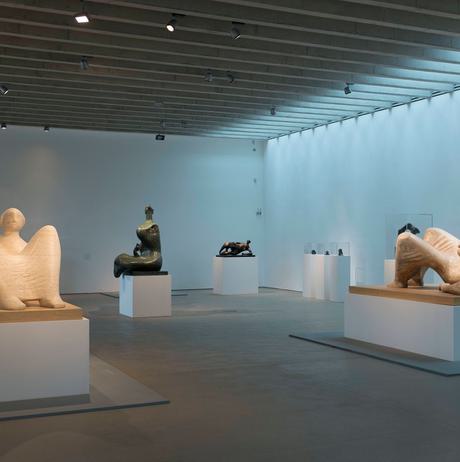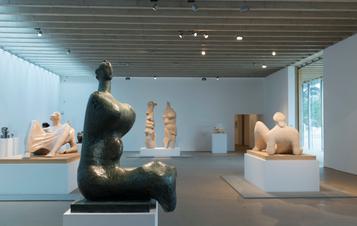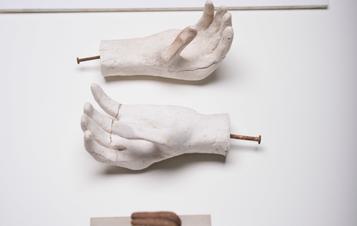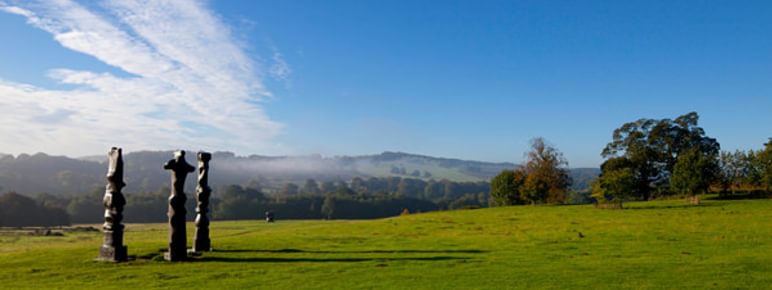
About Henry Moore: Back to a Land
‘…this show, Back to a Land, sheds a new personal light on a man mostly known as a monumentalist’
Born in Castleford, West Yorkshire, Henry Moore (1898–1986) is one of the most important artists of the 20th century. This major exhibition, in collaboration with The Henry Moore Foundation, provided a fresh approach to Moore’s work by considering his profound relationship with land, which was fundamental to his practice and fuelled his visual vocabulary.
"The mystery of what is under the shroud is somewhat akin to the mystery in poetry. It is this element of the unknown that fascinates me in caves and the holes in the sides of hills – you don’t know what is there until you look and explore into them. Mystery plays a large and enlivening part in our lives; not knowing but wanting to know, wondering and guessing, questioning and exploring." Henry Moore 1974
Henry Moore: Back to a Land explored the artist’s radical notion of placing sculpture in the landscape, something which forever changed British sculpture.
Monumental sculptures, such as Large Two Forms (1966–69) and Large Reclining Figure (1984), were displayed against the beautiful and historic vistas of the Bretton Estate. Experienced as monuments in the landscape, and referencing prehistoric land interventions, Moore’s sculptures in the open air are ever changing, given life through different skies, weather and season.
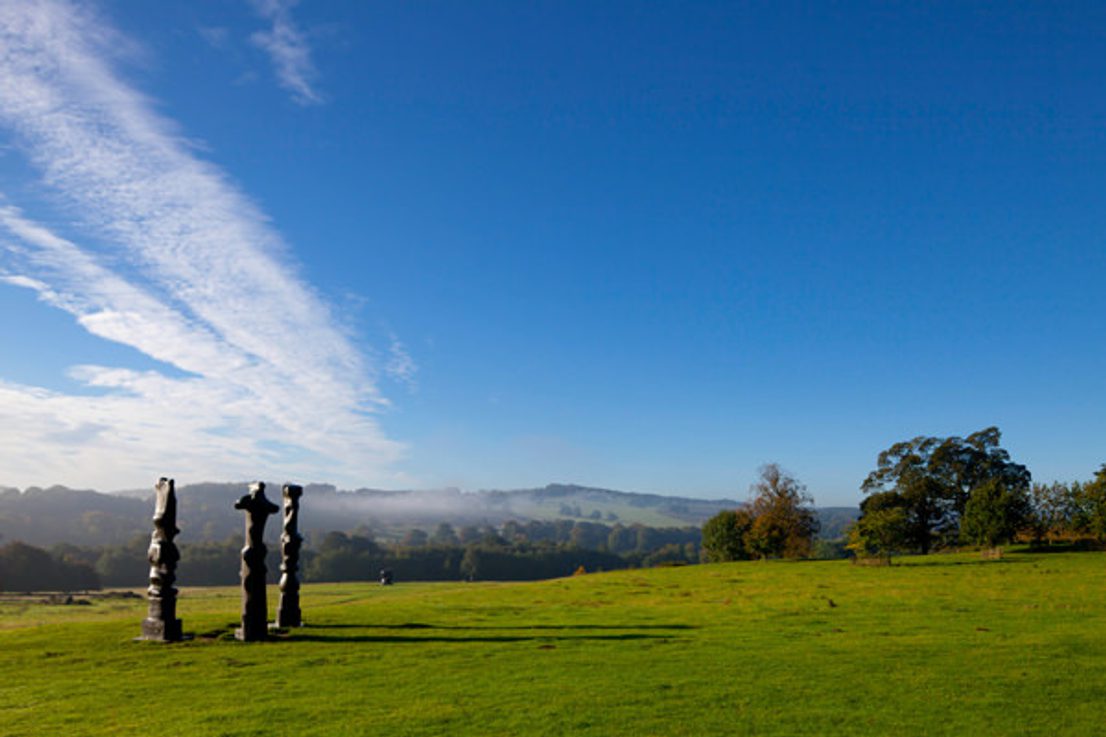
A founding patron of YSP, Moore was committed to showing his work in the open air and in the rolling hills of the former Deer Park in particular.
Here, it can be experienced with the resident flock of sheep, an animal described by the artist as an ideal foil for the appreciation of his work, being exactly the right size and scale. The exhibition takes its title from Jacquetta Hawkes’ seminal book A Land (1951), a poetic history of the physical landscape of Britain. Moore illustrated a 1954 edition of the book and the exhibition features these originals.
Exploring scale and the interplay between internal and external spaces, Henry Moore: Back to a Land also emphasised the artist’s constant investigation of land, from the black coal seams of his hometown and the rich geology of Britain, to the mystical ancient forms of Stonehenge. Inside the award-winning and purpose-built Underground Gallery, sculptures, maquettes and rarely seen works on paper demonstrated Moore’s understanding of geology and rock formations, and reference his childhood experience of caves.
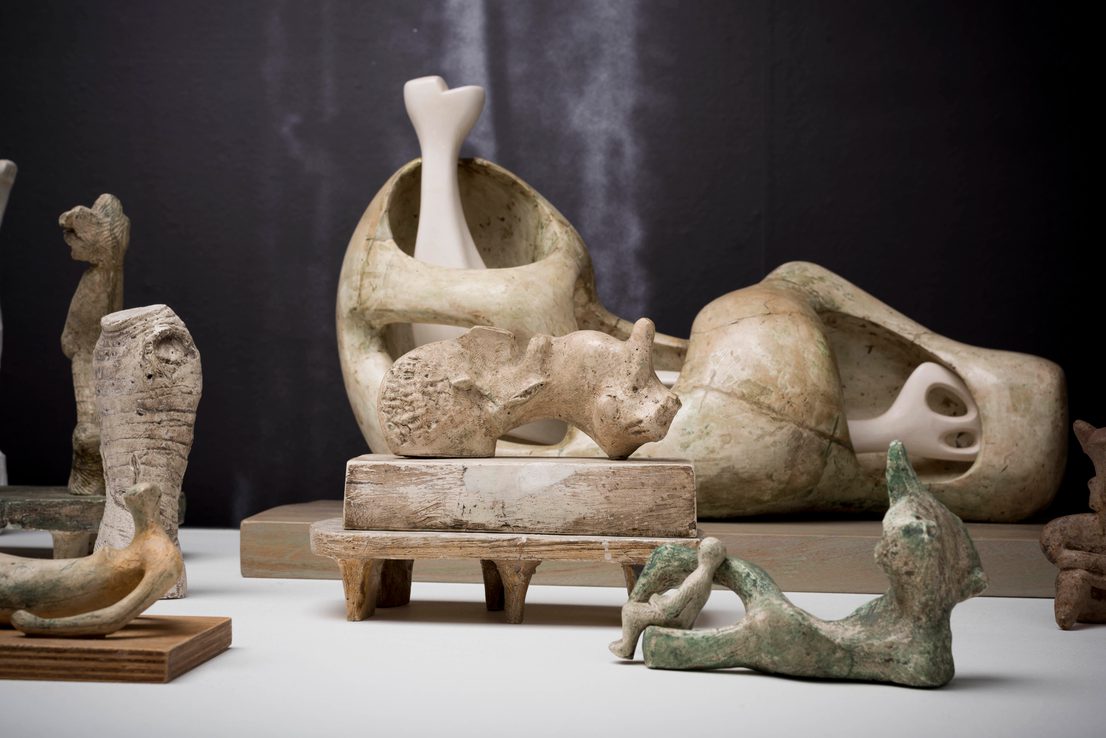
The human figure, like the landscape, was at the core of Moore’s practice and works in the exhibition explored the relationship between figure and landscape through both the iconic large-scale sculptures for which Moore is so well known, as well as through rarely seen two-dimensional works. Moore was able to explore on paper imaginary landscapes not possible in three dimensions, drawn from his own psyche and experiences. In the atmospheric etching, Reclining Figure in Dark Landscape (1979–80), landscape and figure become a single formidable being, while the etching Elephant Skull (1970), which could be mistaken for a scene of rocks and crevices, demonstrated Moore’s interest in bones and skeletal structures – the interior space of the body in relation to that of the earth.
The exhibition also presented an opportunity to explore the man behind the practice with a carefully selected display of personal artifacts, notes, sketches and photographs, curated in collaboration with the artist’s daughter, Mary Moore.
‘A thought-provoking exhibition…’
You might also like
More- Art Outdoors
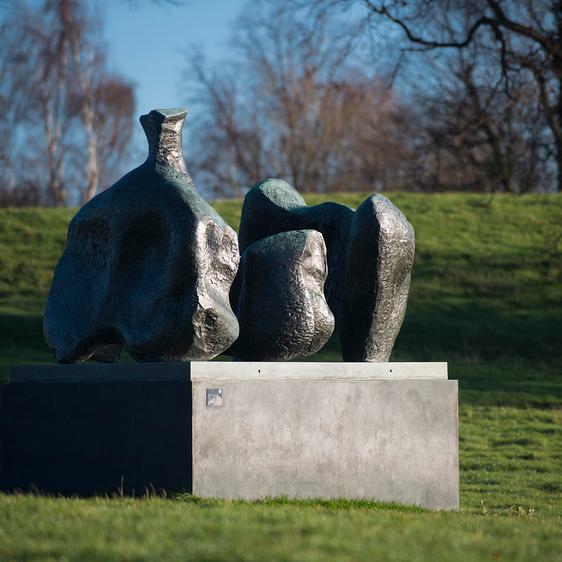
Henry Moore: Three Piece Reclining Figure No.1
- News

YSP recognised as ‘gold’ winners in Visit England Awards
26 October 2022 - Art Outdoors

Henry Moore: Upright Motives No. 1 (Glenkiln Cross): No 2; No 7
Moore created twelve Upright Motives in the mid 1950s. In their powerful symbolism these pieces owe much to the tall, upright stones, known as menhirs, from prehistoric times. Moore brought all these influences together to create forms which are unmistakably his own. - Art Outdoors

Henry Moore: Large Totem Head
This sculpture is enlarged from a much smaller work made five years previously called Head: Boat Form and the resemblance to a hollowed-out boat remains clear. However, unlike that sculpture, which sat horizontally, Large Totem Head is raised to a standing form, assuming the totem-like presence of its title.
